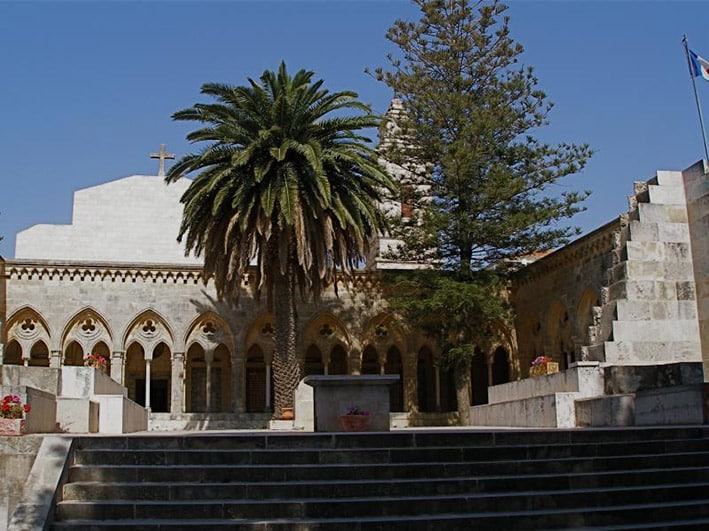
You mentioned that there was a third church built by St Helena in Jerusalem, on the Mount of Olives. Which church is it?
In addition to the Church of the Holy Sepulchre in Jerusalem and the Basilica of the Nativity in Bethlehem, St Helena also had a church built on the Mount of Olives, to the East of Jerusalem, to commemorate Our Lord’s ascension into heaven at the site where it is believed to have taken place. The church became known as the Church of the Eleona, meaning church of the olives, since it was built on the Mount of Olives.
The church was built over a cave beside the road that leads from Bethany and Bethphage to Jerusalem, where, according to an ancient tradition, Jesus often gathered with his apostles to explain his teaching, including that on the end of the world and the destruction of Jerusalem. It was here too that he gave them the Our Father.
The tradition was strong enough for St Helena to decide to build a basilica there in 326 AD. The Basilica of Eleona had three naves, as well as a large atrium with four porticoes at the entrance. The cave itself formed the crypt beneath the sanctuary. Some decades later, a few metres away a church known as Imbomon was built around the rock from which Our Lord was believed to have ascended into heaven.
A pilgrim by the name of Egeria, or Aetheria, who travelled to the Holy Land around the end of the fourth century left copious notes on what she saw there. Her writings are an important source of information on the buildings and life of the Church at that time. With regard to the Basilica of Eleona she wrote that on Tuesday of Holy Week “all proceed … to the church, which is on the mount Eleona.
And when they have arrived at that church the bishop enters the cave where the Lord was wont to teach his disciples, and after receiving the book of the Gospel, he stands and himself reads the words of the Lord which are written in the Gospel according to Matthew, where he says: ‘Take heed that no man deceive you.’
And the bishop reads through the whole of that discourse” (Itinerarium Egeriae, 22, 1-2 (CCL 175, 78). The historian Eusebius of Caesarea (circa 260-339 AD) too recounts that Constantine constructed a church over a cave on the Mount of Olives that had been linked with the Ascension. It should be understood that some of the sources attribute these churches to Constantine, and others to his mother St Helena. It was St Helena, who was actually in the Holy Land at that time, who supervised the construction.
The tradition that this was also the place where Our Lord gave his disciples the Our Father was confirmed by many witnesses and it has been maintained unbroken to this day. Unfortunately, only ruins remain of the original church built by St Helena, which was destroyed by the Persians in 614 AD. In 1872 a French Carmelite community was established on the site and it was they who built the present church, known as the Church of the Pater Noster, and the priory beside it.
After the First World War, in 1920, work began on a new basilica over the cave, to be dedicated to the Sacred Heart. However, the works were interrupted after one wing of the priory was demolished and work had begun on the crypt. The works were never resumed.
The entrance to the church is on the Bethphage road.
On the right there is a flourishing garden on the spot where the portico of the basilica of St Helena once stood. On the left a flight of stairs leads down to the priory of the Carmelites, with the church behind it. In the centre, beneath the sanctuary of the unfinished basilica, is the grotto of the Our Father. It is a small space with a double entrance, dating from the time of the Crusades.
Of its two sections, the one at the back is still in a state of ruins, and graves were found there that could date back to the first centuries of the Christian era.
Of great interest are ceramic tiles on the walls surrounding the whole shrine, with the text of the Our Father in more than one hundred languages and dialects. For this reason, the church is now more commonly known as the Pater Noster Church.
